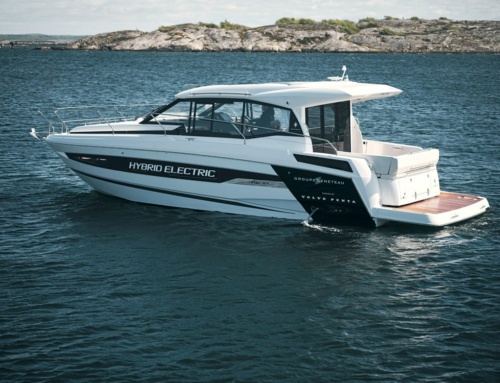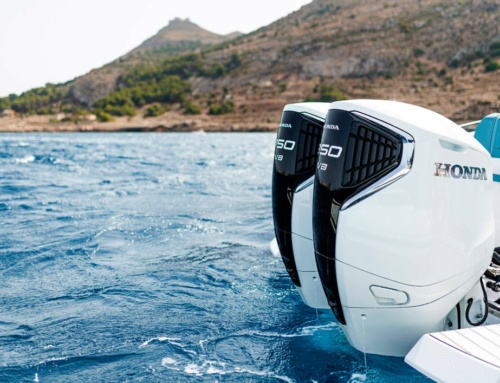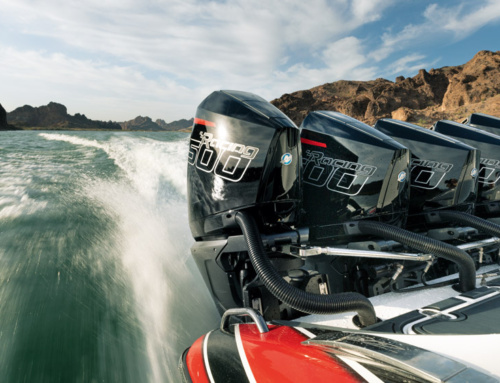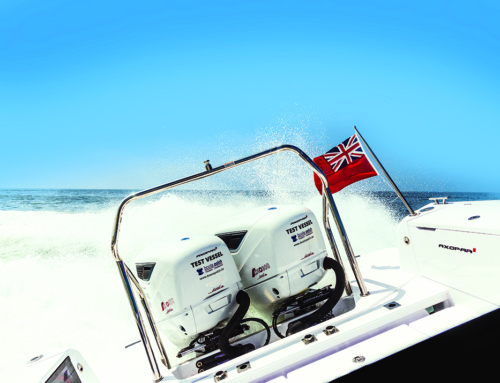Volvo have been building hybrid trucks for some time, so it was inevitable that they would eventually transfer their know-how into the marine world, as Dave Marsh reports …
Although all-electric products are in the pipeline (circa 2021 launch), most boaters will find Volvo’s hybrid products most interesting, especially when they’re integrated into Volvo’s IPS system. There are some dazzlingly complex hybrid solutions available, but Volvo have thankfully plumped for the simplest, which to my mind is the most effective anyway. An electric motor and a clutch will sit between the diesel engine and the IPS pod drive, and various drive modes will be designed into the system, including (probably) a boost mode that could temporarily piggyback the diesel and the electric motor – useful for helping overly heavy boats onto the plane. Under diesel power alone, the electric motor works in reverse to generate the power needed to charge the big batteries.
Power outputs are still being formulated, but these are typically expected to provide around 8 to 12 knots of battery-only propulsion for the average powerboat. Volvo’s target speed is hugely significant because the burgeoning use of stabilising systems on ever smaller boats means that very comfortable slow-speed travel has become feasible for all manner of boats, including planing craft that would previously have had to hurry along to get comfortable. Volvo say they are starting with the 8- to 13-litre engine range, but that’s an impressively wide-ranging start, comprising the 550hp D8 IPS700 through to the 1000hp D13 IPS1350. So boat size, from something like an Absolute 56 through to pretty sizeable sports cruisers, especially with triple IPS installations.
As for the exact size of the modular lithium-ion battery banks, that will be an operational needs decision (range, speed, cost, weight, run-time, space, etc.) made by the boat builder in conjunction with Volvo. At the sort of target electric-power-only displacement speeds of 8 to 12 knots that Volvo are aiming for, the resistance curve of any vessel is extremely sensitive to weight, speed, hull form, appendage drag (e.g. fins) and even mid-season fouling. So it’s not possible to predict a typical battery size because, for example, a vessel travelling at, say, 12 knots might conceivably require 5x the battery capacity to achieve the same range and/or time to battery exhaustion that an only slightly smaller and marginally lighter vessel might need travelling at 8 knots.
Although the headline grabber is the notion of emission-free travel (in reality a tenuous concept that ignores how the power is originally generated), the actual experience of hybrid travel is the real star. Take my word for it, travelling along in complete silence under electric power, especially in and out of peaceful anchorages, with not even a hint of exhaust noise, is a nigh-on mystical experience.
Volvo self-docking
Having spent the last decade assuring us that Volvo IPS-powered boats with joystick control are so extraordinarily easy to manoeuvre that a partially sighted 12-year-old with absolutely no boating experience whatsoever could easily manoeuvre a 60-footer into a tight berth with a force 6 and metre-high waves to contend with (I may be exaggerating slightly), the relentlessly innovative Swedish company has developed a manoeuvring system that is even more miraculous – in their words, something that ‘aims to tackle one of boating’s most stressful manoeuvres: docking’.
That something is self-docking. In essence, the new system (still in prototype form) combines IPS’s remarkable pod-drive manoeuvring abilities (and to be fair to Volvo, in skilled hands it truly is a thing of wonder) with GPS and other sensors on the dock to automatically manoeuvre the boat into its berth. One of my colleagues was aboard during the demonstration in Gothenburg, on board an Azimut 68S, and although she described the process as extremely slow, it clearly worked.
Complex software aside, the system itself is reassuringly straightforward. As the boat approaches, it first recognises that it has reached a preliminary user-defined catchment zone. Skippers can define intermediate zones too, but I reckon it will be safer to define a single catchment area as close to the berth as possible so skippers can continue to manoeuvre for as long as possible around unforeseen obstacles like approaching boats and poorly laid anchor lines.
The skipper then activates the self-docking function, and GPS guides the boat into an initial docking-ready position: for example, stern-to in the archetypal Mediterranean marina. The final approach is controlled by combining signals from the GPS and sensors on the dock. Because the system eliminates the physical interaction with the joystick (which inevitably introduces a modicum of lag), as long as the sensor inputs remain sufficiently accurate and stable, it should be impressively subtle and fast-reacting, even compared with an experienced skipper.
At any stage of the process, the skipper can hit a sort of ‘pause’ button, and Volvo’s DPS (Dynamic Positioning System) will attempt to hold the vessel stationary – especially useful for sloppy crew who haven’t properly sorted the fenders and lines. Although sensor controlled, the final parking position is user defined – a first-rate feature because it allows for different lengths of passerelle, protruding tenders, etc. The prototype system already copes with bow-to and side-on mooring, and Volvo have plans for sideways-facing sensors (on the boat) that could help with collision avoidance or manoeuvring into very tightly constricted berths. Volvo plan to make self-docking a retrofit option.













